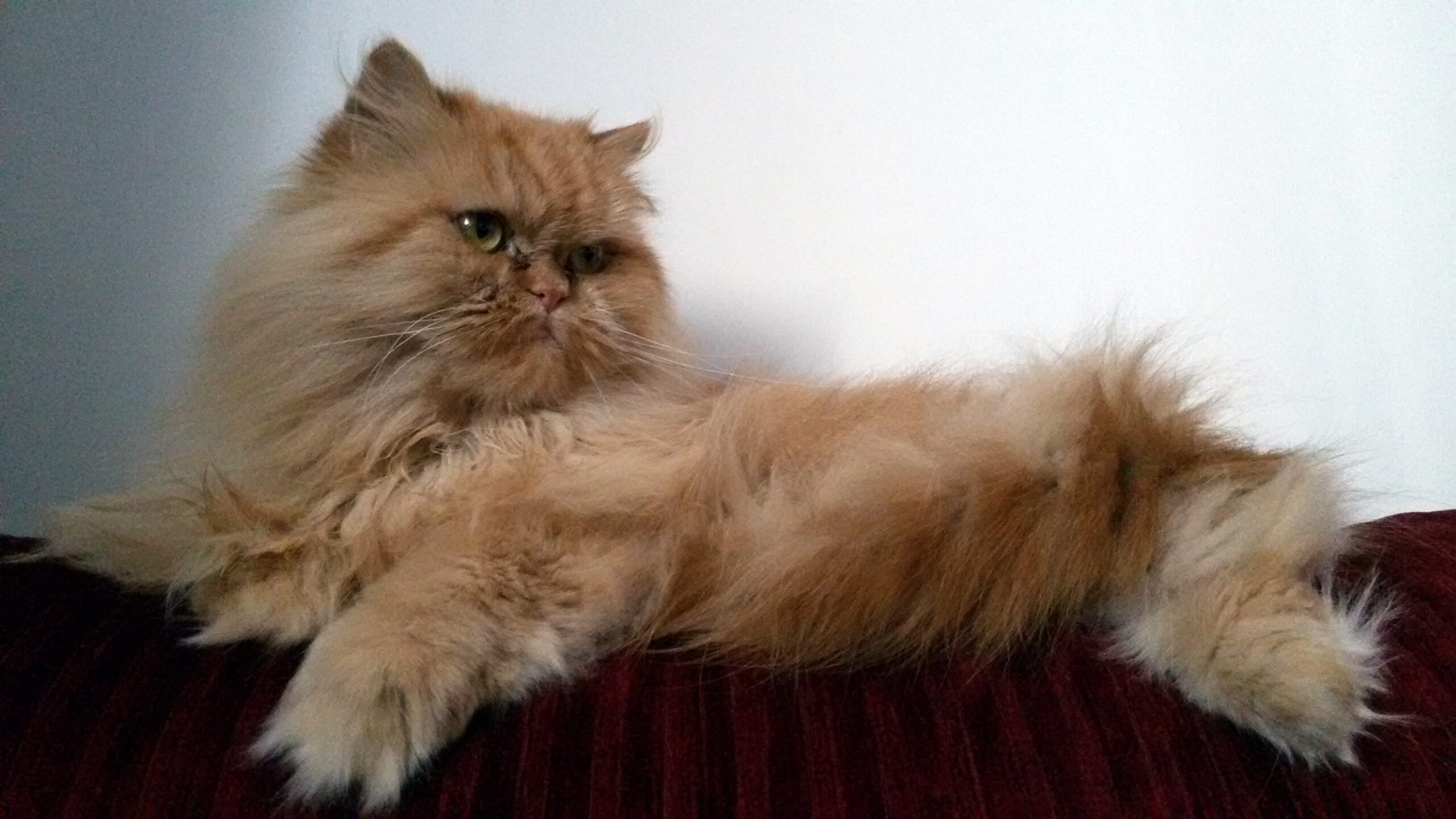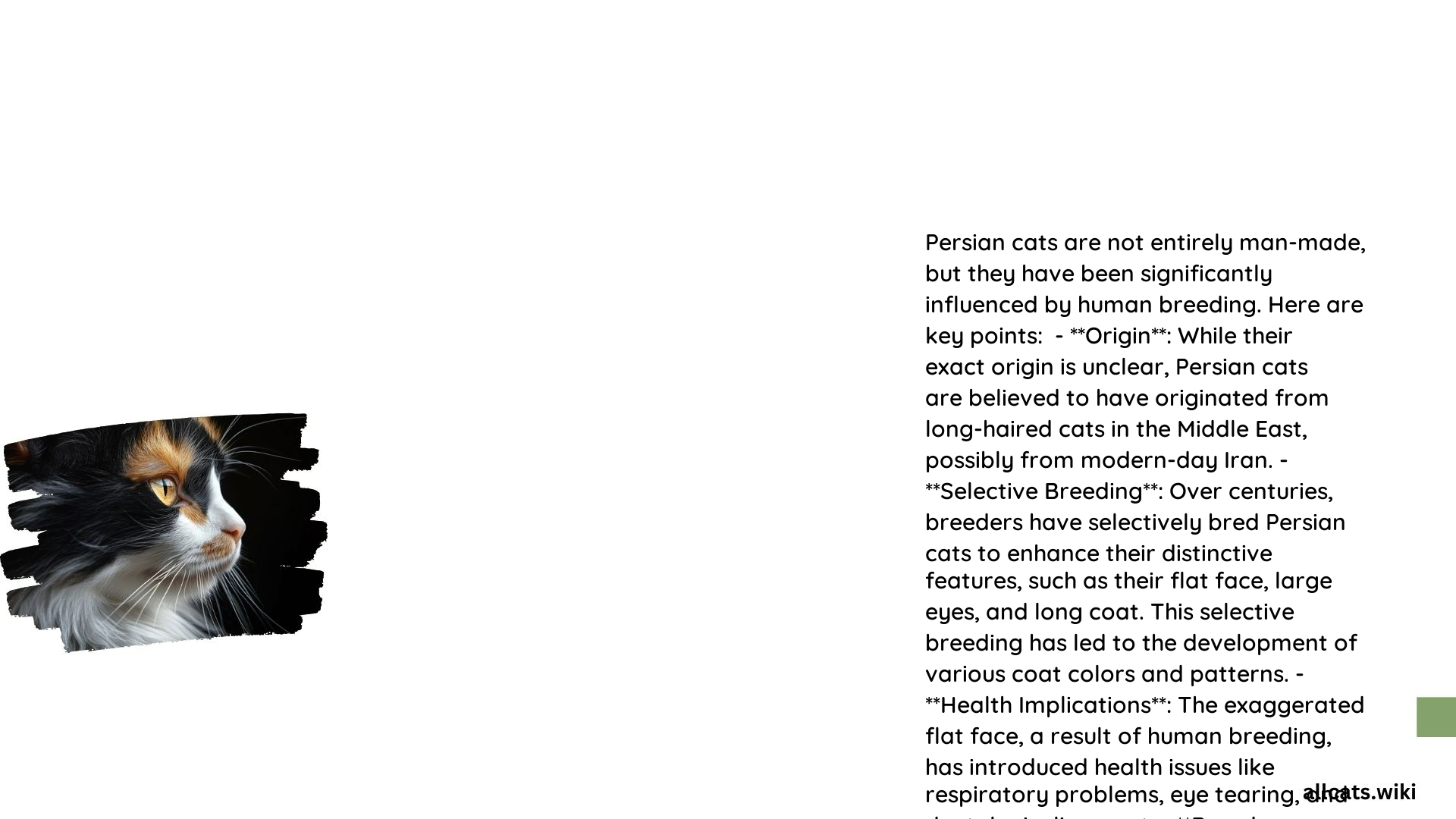Persian cats are not a natural breed, but rather a product of extensive selective breeding by humans over centuries. Their distinctive physical characteristics, such as their flat faces, long fur, and stocky bodies, have been intentionally bred for to create the modern Persian cat.
Origins and Historical Context of Persian Cats

Persian cats are believed to have originated in Mesopotamia, later known as Persia (now Iran), with evidence suggesting they were introduced to Europe in the 1500s as highly valued items of trade. Initially, these cats were bred for their long, silky coats and other desirable traits, which impressed European breeders who began to perpetuate these characteristics.
How Did Selective Breeding Shape the Persian Cat?

What is the Brachycephalic Mutation and How Did it Affect Persian Cats?
The modern Persian cat’s flat face and short muzzle are the result of a brachycephalic mutation that occurred during World War II in the United States. Breeders intentionally selected for this trait, leading to the development of the “peke-faced” or “snub-nosed” Persian cat. This mutation has been a defining feature of the breed since the mid-20th century, but it has also led to health issues such as breathing problems due to smaller-than-average nostrils and misaligned jaws, which can cause difficulties in eating and chewing.
How Did Breeders Develop the Long, Luxurious Coat of Persian Cats?
The long, luxurious coat of the Persian cat is another result of selective breeding. The breed’s coat comes in a variety of colors and patterns, and breeders have worked to maintain and enhance this trait over the centuries.
What Other Physical Characteristics Were Selectively Bred in Persian Cats?
In addition to the flat face and long fur, Persian cats are known for their stocky, cobby bodies. This body type has been achieved through selective breeding for a broad, deep chest and well-rounded mid-section, which is now a standard feature of the breed.
How Have Genetic Mutations Influenced the Development of Persian Cats?
What Role Did the Color Inhibitor Gene Mutation Play?
The color inhibitor gene mutation in 1882 led to the development of the “chinchilla” coat variety, another example of human influence in shaping the breed’s appearance.
How Have Breeders Addressed Health Issues Caused by Selective Breeding?
The selective breeding for extreme features has led to health issues such as polycystic kidney disease and breathing problems. Breeders have had to respond by removing affected cats from breeding programs and using genetic testing to control these issues.
Conclusion
In summary, Persian cats are not a natural breed, but rather a product of extensive selective breeding by humans over centuries. Their distinctive physical characteristics, such as their flat faces, long fur, and stocky bodies, have been intentionally bred for to create the modern Persian cat. While they have a natural origin in Persia, their modern form is largely the result of human influence and selective breeding practices.
Reference:
1. Cat Fanciers’ Association: “Persian” – https://cfa.org/persian/
2. WebMD: “What to Know About the Persian Cat” – https://pets.webmd.com/cats/what-to-know-about-the-persian-cat#1
3. Wikipedia: “Persian cat” – https://en.wikipedia.org/wiki/Persian_cat
